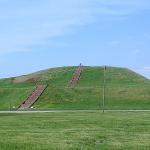From WSJ by Sue Shellenbarger:
Could you pack more into each day if you did everything at the optimal time?
A growing body of research suggests that paying attention to the body clock, and its effects on energy and alertness, can help pinpoint the different times of day when most of us perform our best at specific tasks, from resolving conflicts to thinking creatively….
When it comes to doing cognitive work, for example, most adults perform best in the late morning, says Dr. Kay. As body temperature starts to rise just before awakening in the morning and continues to increase through midday, working memory, alertness and concentration gradually improve. Taking a warm morning shower can jump-start the process….
Most people are more easily distracted from noon to 4 p.m….
Alertness tends to slump after eating a meal, Dr. Matchock found. Sleepiness also tends to peak around 2 p.m., making that a good time for a nap….
Surprisingly, fatigue may boost creative powers. For most adults, problems that require open-ended thinking are often best tackled in the evening when they are tired….
When choosing a time of day to exercise, paying attention to your body clock can also improve results. Physical performance is usually best, and the risk of injury least, from about 3 p.m. to 6 p.m…..















